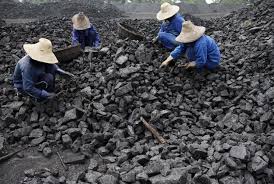When the largest coal producer in China puts out the kind of numbers China Shenhua Energy Co. just reported, it’s an unmistakable signal that the most populous country on the planet is continuing to step back from coal.
In announcing its 2014 results and its 2015 business targets, Shenhua dropped some bombshells:
- It sees a 10 percent drop in its domestic coal sales in 2015 (that’s a 47 million tonne reduction to 404 million tonnes).
- Its capital expenditure plans for coal and power generation in 2015 are down 25 percent over 2014 to $3.2 billion.
- It expects its ports and rail investment to drop 12 percent year-over-year to $2.5 billion.
The numbers reveal a strategic shift by Shenhua as it reduces its volumes, its operating costs and its capital spending, and the 2015 numbers in particular signal an acceleration in this strategy. These trends are bigger, actually, than Shenhua. The company has a 15 percent share of the Chinese coal market, so it’s a key barometer of the larger picture, and its cutbacks send a clear signal that China is intent on curbing its emissions by a rapid diversification away from coal.
EVIDENCE THAT THIS IS MORE THAN A CYCLICAL DOWNTURN
Proponents of the view that coal is only in a cyclical downturn may well continue to argue that China’s 2.9 percent reduction in coal consumption in 2014—the first drop in over a decade, despite total electricity production increasing 3.8 percent and the Chinese economy expanding at a 7.4 percent annual growth rate—was just a cyclical dip. Shenhua’s numbers say something else entirely, indicating a structural slowdown that began last year. Its average coal price received in 2014, for instance, dropped almost 10 percent year-over-year, with total coal volumes (production and traded volumes combined) falling 12.4 percent, in a decline that accelerated rapidly in the fourth quarter.
What adds an important wrinkle to Shenhua’s circumstances is that the company remains financially robust with only limited leverage (it produced coal at an average cash cost that gave it a gross profit margin of 69 percent, a rate on pace with 2013 levels). Shenhua, profitable though it is, is simply falling in line with Premier Li Keqiang’s plans to cut the country’s energy intensity—a measure of overall energy inefficiency—by another 3.1 percent in 2015, building on a 4.8 percent decline in 2014 and capping coal use to less than 65 percent of total primary energy consumption by 2017.
Shenhua’s numbers coincide, too, with the National Energy Administration’s publication of remarks by Nur Bekri, China’s top energy official, in which Bekri says the country aims to raise wind-power capacity to 200 gigawatts and solar to about100 GW by 2020, up from 95.8 GW and 26.5 GW respectively at the end of 2014.
Equity analysts have taken note, cutting their consensus forecasts for the five top publicly listed Chinese coal company earnings in 2015 by 45 percent on average. Shenhua’s condition is relatively strong within that group, with 2015 earnings expectations down 20 percent, while rivals China Coal and Shaanxi Coal are down more than 60 percent and 55 percent, respectively.
THE GLOBAL SEABORNE COAL TRADE IS AT RISK
The greatest global-industry impact of China’s hastening shift to cleaner energy will be felt by the seaborne thermal coal sector, and the message to investors is plain: this sector is in structural decline. Shenhua’s numbers are the clearest signal yet of this trend, and even the most bullish coal investors would do well to take note. The coal industry has been a major destroyer of wealth over the past four years, wiping out billions of dollars of shareholder value, and there’s no reason to believe it will reverse course.
While some analysts have suggested Shenhua is being excessively conservative in its coal sales projections for 2015, year-to-date production and sales figures say otherwise:
- Its coal sales year-to-date total 47.4 million tonnes, down 32.1 percent year over year;
- Its in-house production is down 11.8 percent year over year to 46.2 million tonnes;
- Its coal imports are down 100 percent; and
- Its coal-fired power generation is down 3.2 percent year over year in the first two months of 2015.
Meanwhile, China Coal Energy Co, the second-largest coal producer in China, saw January 2015 coal sales drop 13.1 percent year over year to 7.6 million tonnes. That was on in-house production of 7.1 million tonnes, a whopping 31.6 percent year-over-year decline.
Tim Buckley is IEEFA’s director of energy finance studies, Australasia.
Source: IEEFA. Reproduced with permission.











